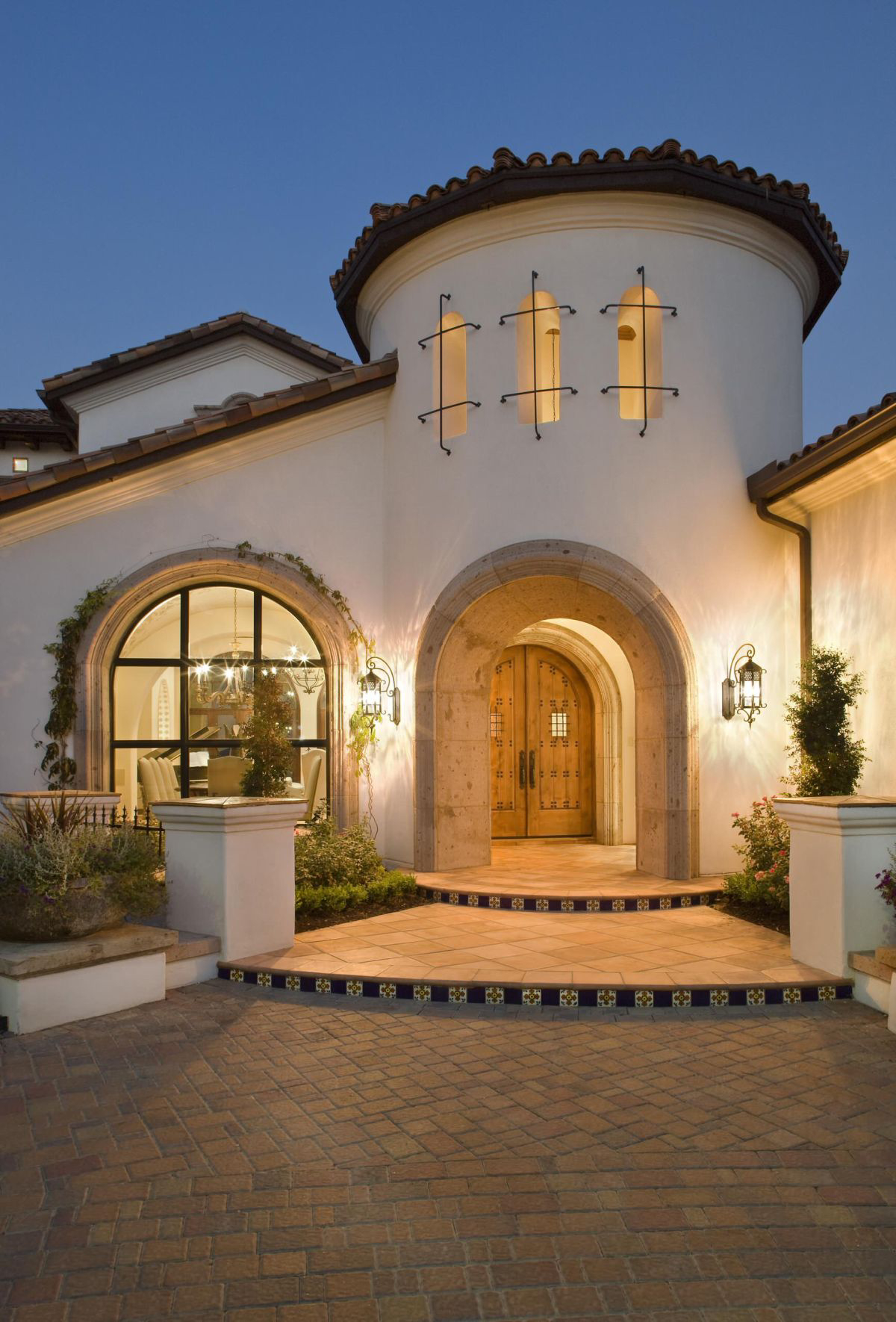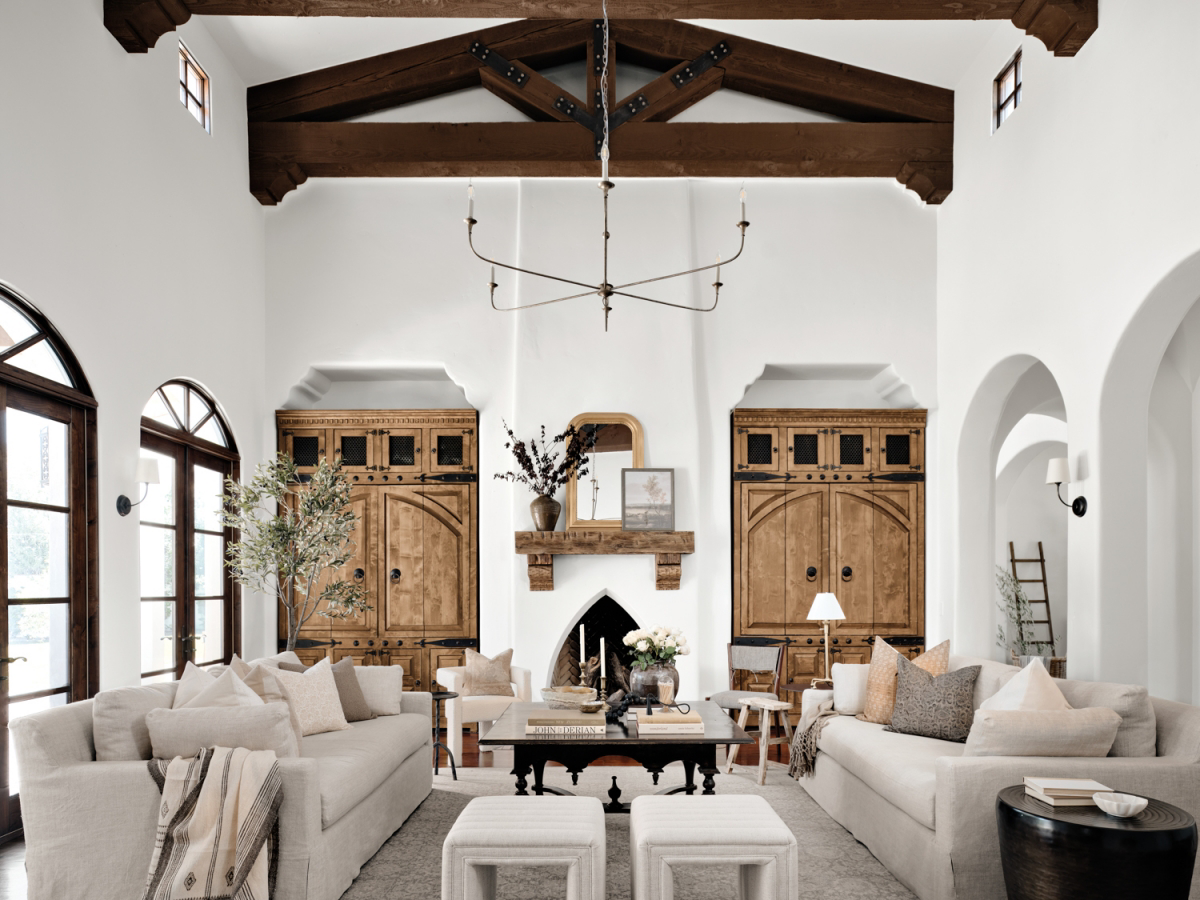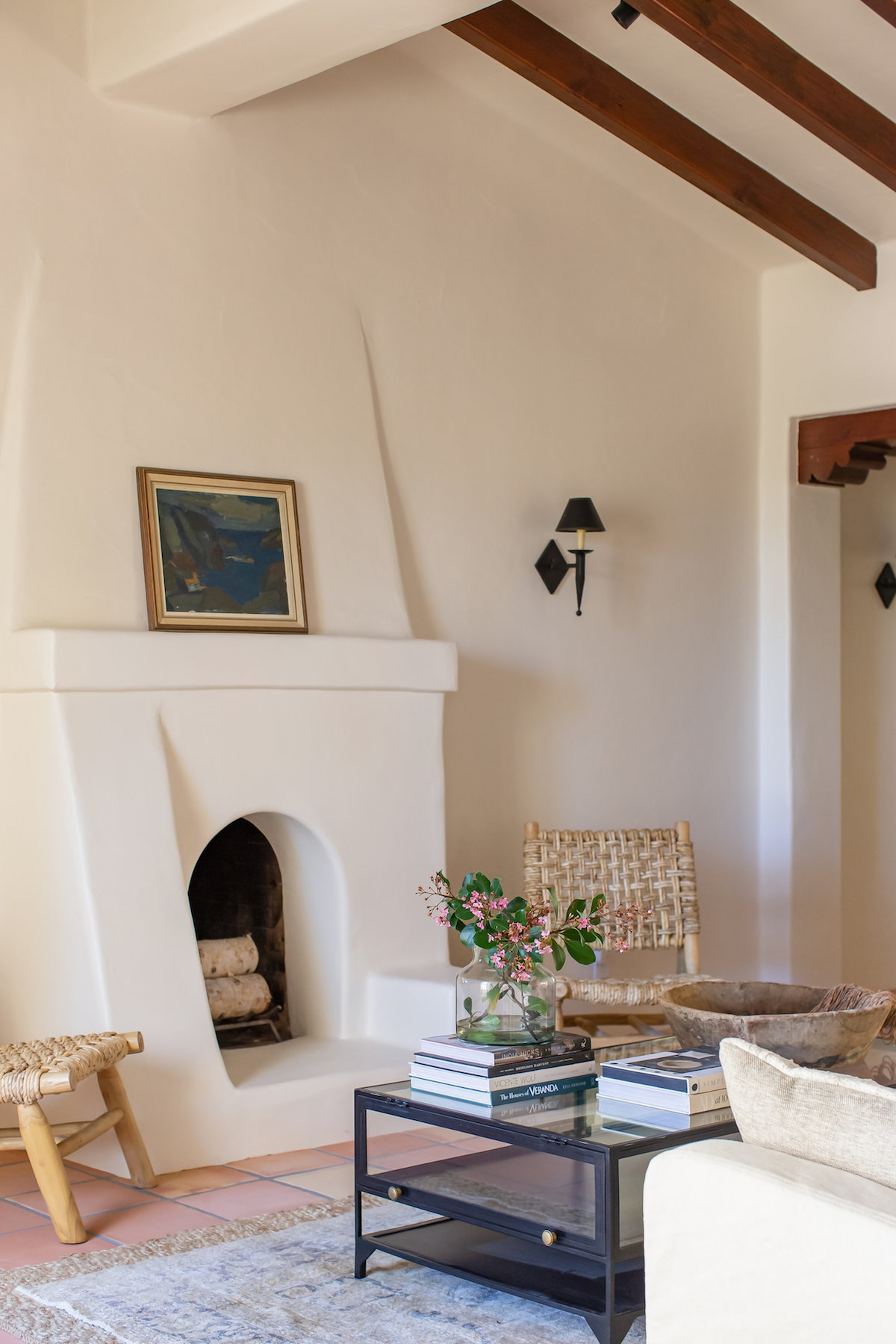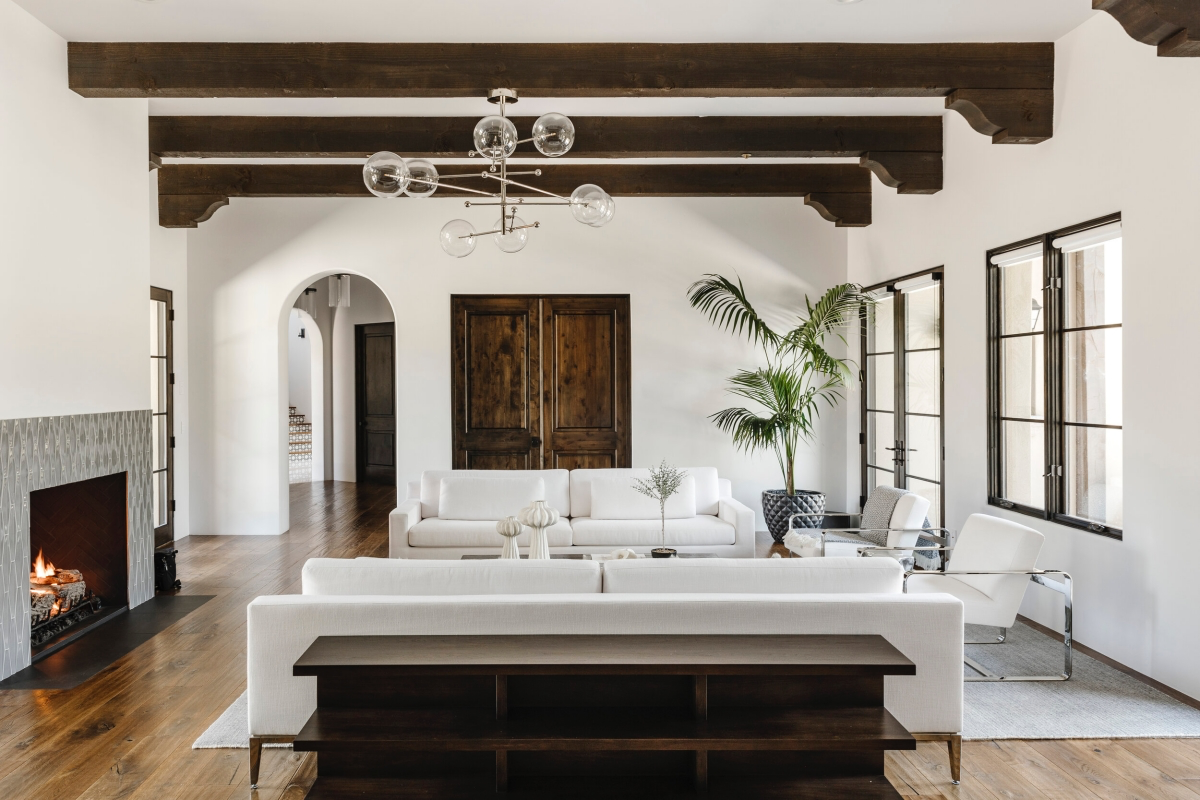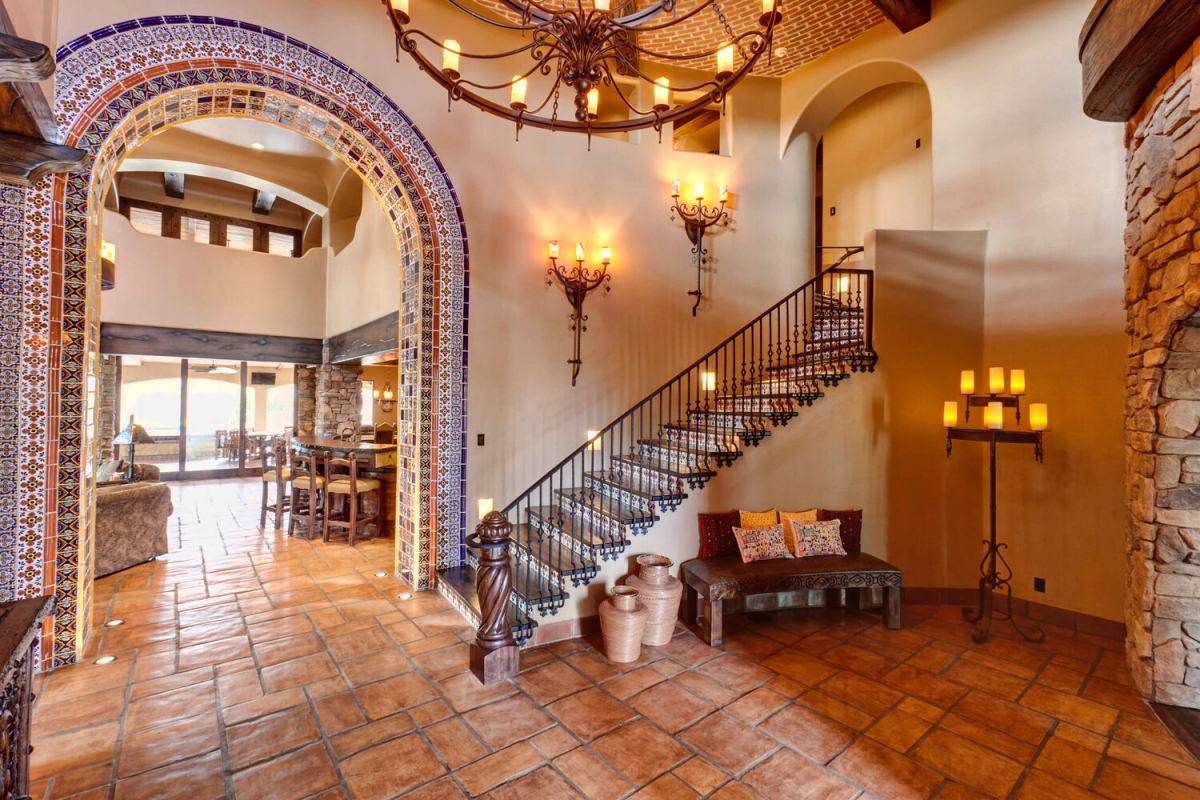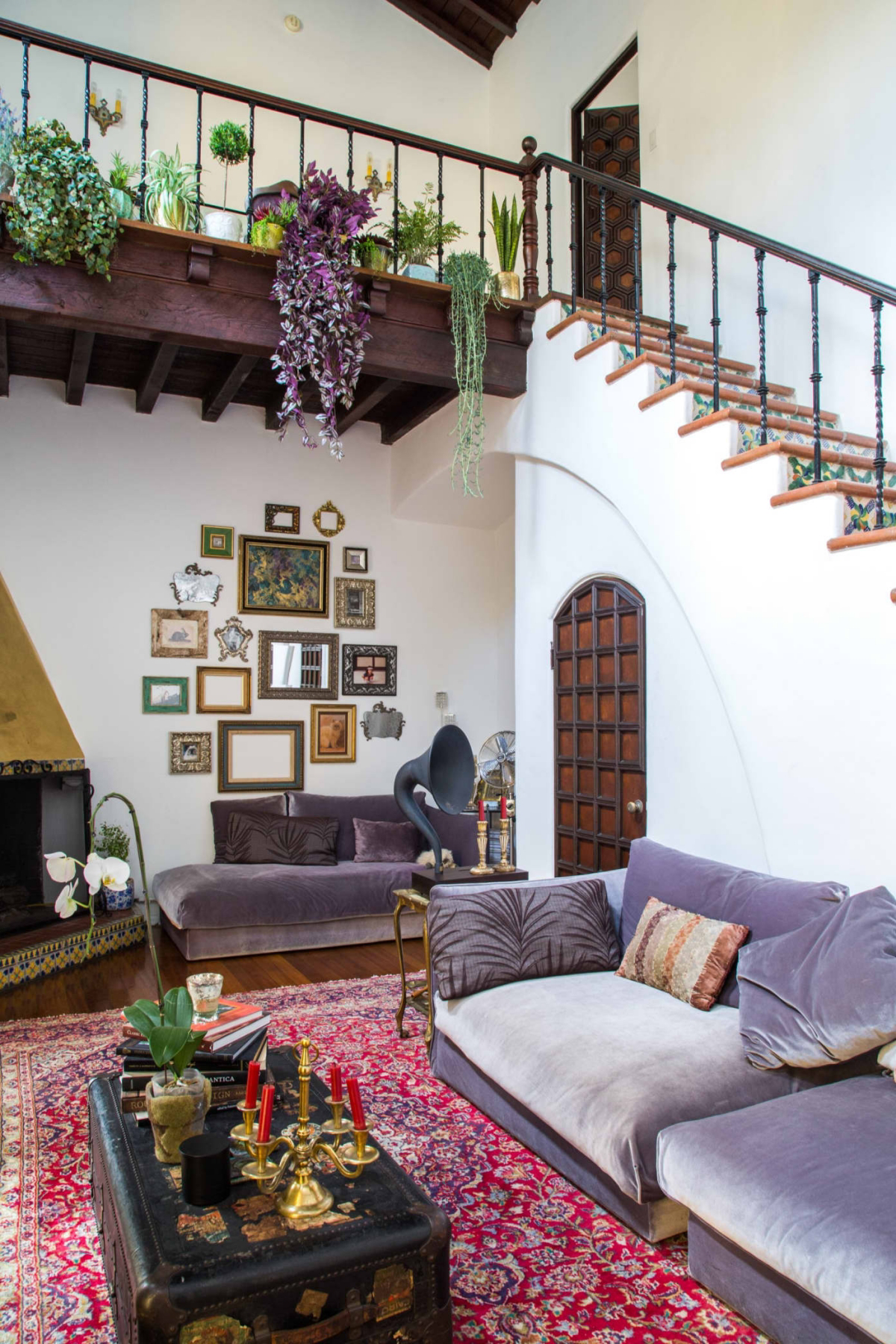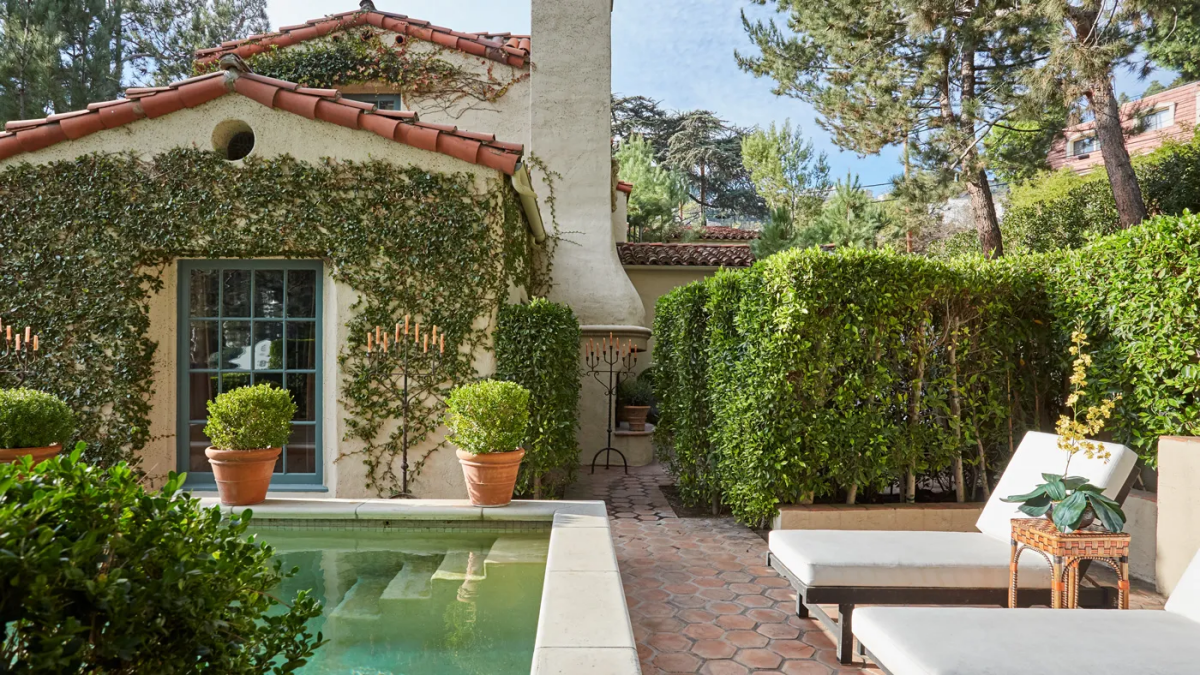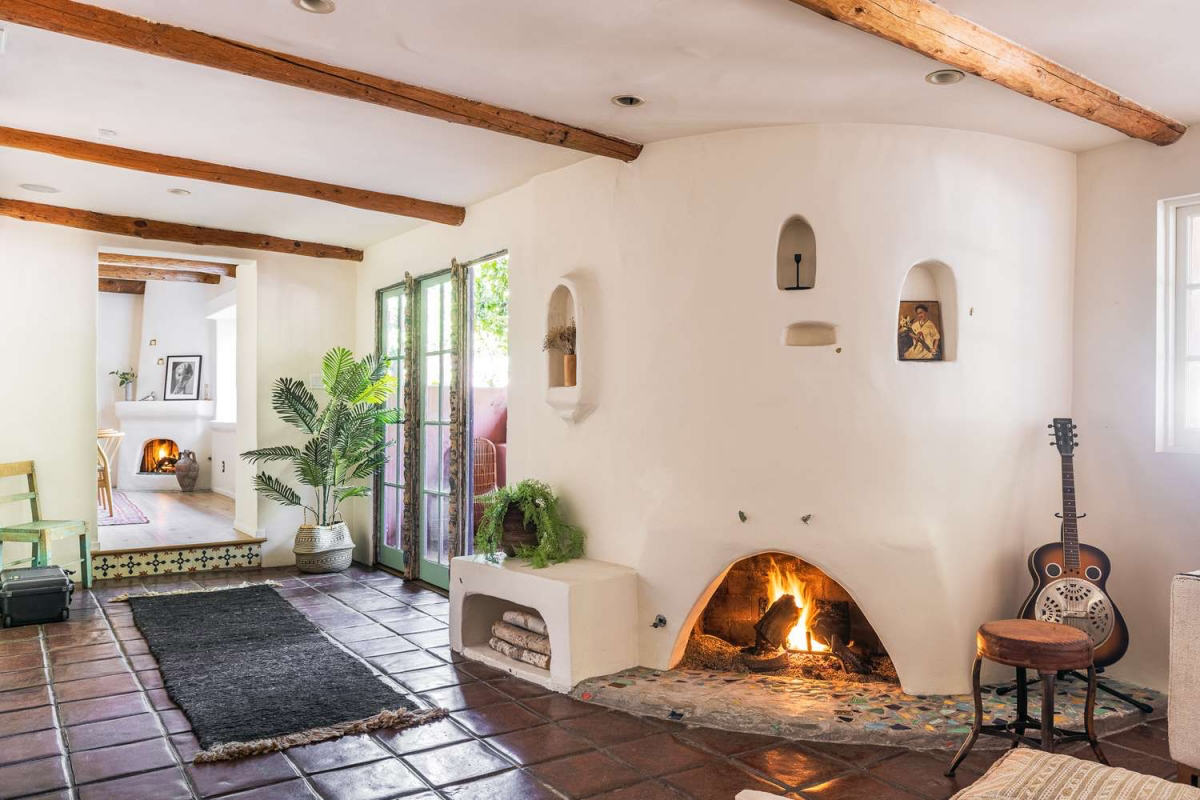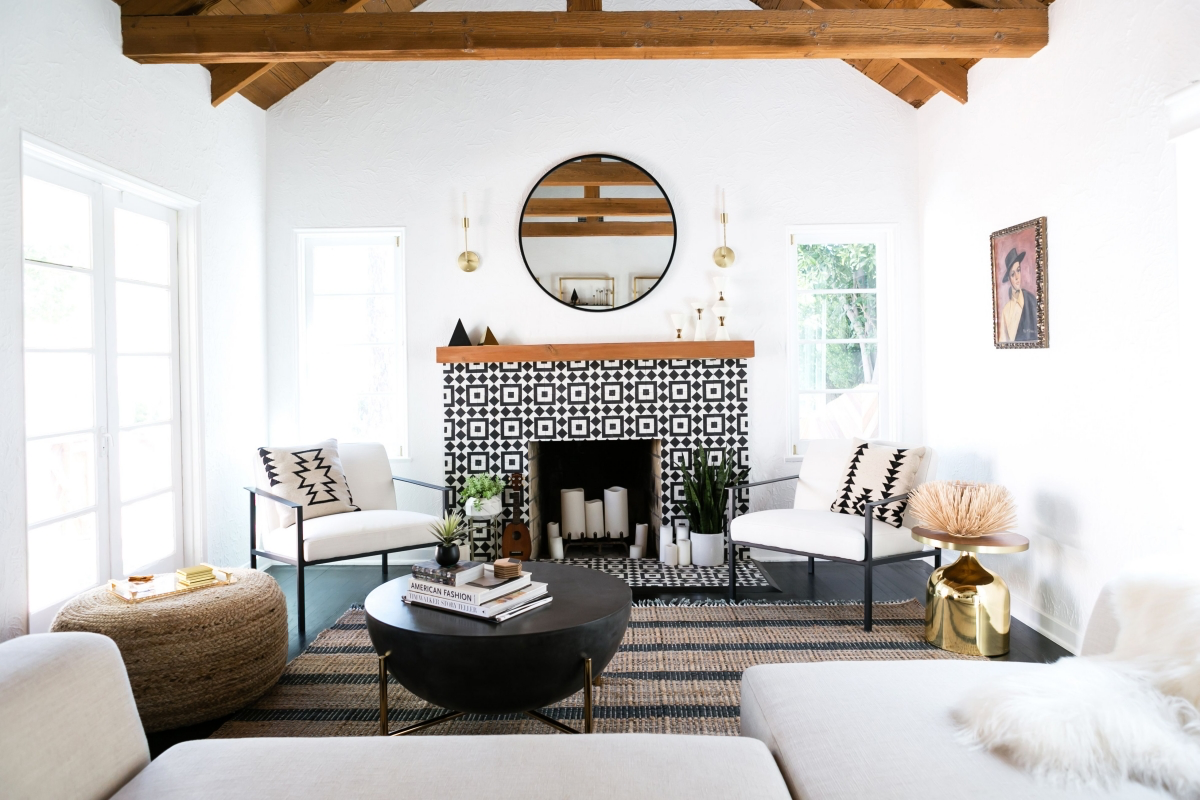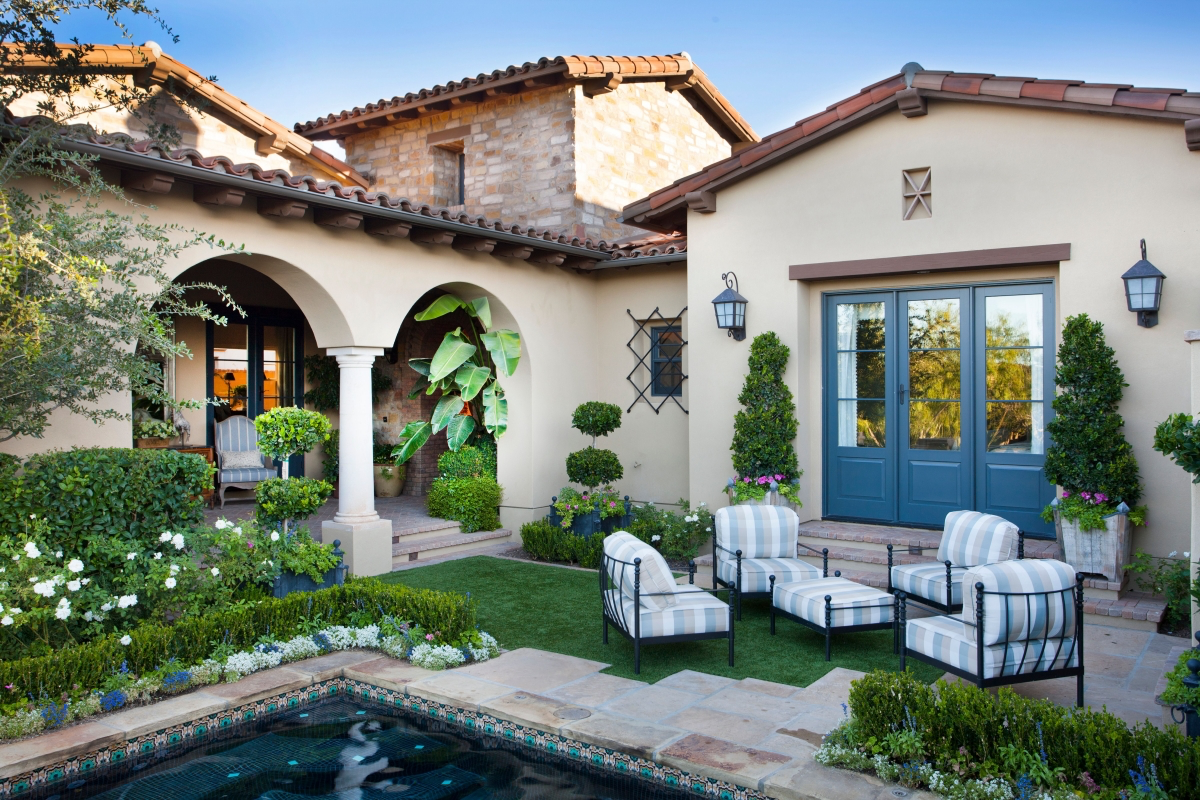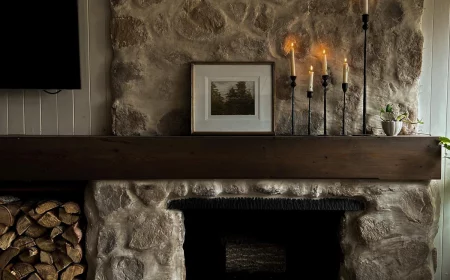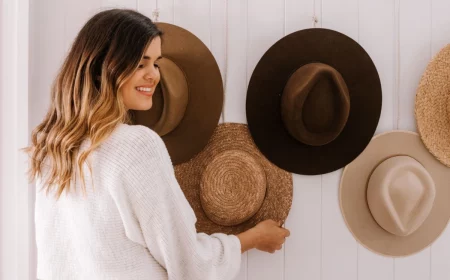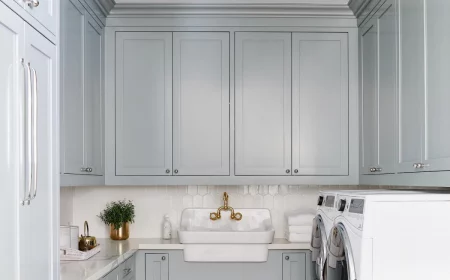Spanish-Inspired Living: The Beauty of a Spanish Style Home
A Spanish style home has an enduring allure that has captivated homeowners for generations. With their distinctive architectural elements and warm, inviting interiors, these homes evoke the charm and romance of the Mediterranean. In this comprehensive guide, we will delve deep into the world of Spanish style homes, exploring their rich history, key features, interior design, landscaping, and providing practical tips for creating your own Spanish-inspired haven. Discover the timeless elegance and Mediterranean magic that Spanish architecture has to offer.
Explore the charm of an alluring Spanish style home in this guide
In this article
- History and Origins of Spanish Style Homes
- Key Features of Spanish Style Homes
- Who Would Like a Spanish Style Home?
- Who Should Avoid This Style?
- Interior Design and Decor of Spanish Style Homes
- Landscaping and Outdoor Spaces
- Contemporary Interpretations and Adaptations
- Tips for Creating Your Own Spanish Style Home
- Conclusion
History and Origins of Spanish Style Homes
The history and origins of Spanish style homes are steeped in the rich tapestry of the Iberian Peninsula, where diverse cultural influences converged to shape this distinctive architectural style. The journey into the heritage of Spanish architecture reveals a fascinating blend of Moorish and Mediterranean design elements that have left an enduring mark.
Moorish Influence
One of the most significant influences on Spanish style homes can be traced back to the period when the Moors, of North African and Islamic descent, ruled parts of the Iberian Peninsula from the 8th to the 15th century. During this era, Moorish architecture made an indelible impact on Spanish design. Moorish architectural elements, characterized by their intricate and geometric patterns, ornate stucco work, and distinctive arches, were seamlessly integrated into the local architectural traditions. Arched doorways, in particular, became an iconic feature that continues to define Spanish style homes today.
Arched doorways became an iconic feature that defines Spanish style homes
Courtyards and the Mediterranean Connection
Another defining feature of Spanish style homes, the central courtyard, or “patio,” bears witness to the Mediterranean influence. This architectural element was not only practical but also a nod to the region’s climate and lifestyle. Courtyards served as shaded retreats from the intense Spanish sun, offering a serene and private outdoor space for relaxation. The design of these courtyards often incorporated elements like fountains, lush greenery, and colorful tiles, creating tranquil oases reminiscent of Mediterranean gardens.
A central courtyard offers a serene and private outdoor space for relaxation
Intricate Tilework
Spanish-style homes are renowned for their intricate and colorful tilework. This fascination with tiles can be attributed to the Moorish legacy. The Moors were master craftsmen in tile production, and their influence is evident in the stunning tile mosaics adorning many Spanish-style homes. These tiles, often known as “azulejos,” boast vibrant patterns and are used to embellish various architectural elements, including stair risers, walls, and even entire facades.
Spanish-style homes are renowned for their intricate and colorful tilework
Key Features of Spanish Style Homes
Spanish style homes are unmistakably characterized by a set of architectural features that set them apart from other design styles. These distinctive elements contribute to the enduring allure of Spanish architecture:
Red-Tiled Roofs
The iconic red-tiled roofs of Spanish style homes are a hallmark of the design. These terracotta roof tiles not only provide a rustic warmth to the exterior but also contribute to the Mediterranean aesthetics.
Whitewashed Stucco Exteriors
The exteriors of Spanish-style homes are typically adorned with whitewashed stucco, creating a striking contrast with the vibrant red of the roof tiles. This combination not only reflects sunlight but also helps regulate indoor temperatures, keeping the interiors cool during hot summers.
Arched Doorways and Windows
Arched doorways and windows are a defining feature of Spanish architecture, offering an elegant and timeless appeal. These arches create a sense of grandeur and serve as a visual focal point both inside and outside the home.
Arched doorways and windows offer an elegant and timeless appeal
Terracotta Flooring
Terracotta tiles, often known as “Saltillo tiles,” are commonly used for flooring. These warm and earthy tiles add character and authenticity to the interiors, imparting a sense of history and tradition.
Wooden Beams
Wooden beams and exposed wooden ceilings are frequently found in Spanish style homes. These structural elements not only provide structural support but also contribute to the overall warmth and character of the interior spaces.
Decorative Tiles
Colorful and ornate ceramic tiles, often featuring geometric patterns and intricate designs, are used to decorate various surfaces, from kitchen backsplashes to stair risers and fireplace surrounds. These tiles infuse spaces with vibrant energy and artistic flair.
Wrought Iron Details
Wrought iron is a prominent feature in Spanish style homes, adorning doors, windows, railings, and light fixtures. Its intricate and artistic designs add to the overall charm and authenticity of the architecture.
Wooden beams contribute to the overall warmth and character of the interior spaces
Who Would Like a Spanish Style Home?
Spanish style homes hold universal appeal, attracting a diverse range of homeowners who appreciate the unique charm and characteristics of this architectural style. Here are some profiles of individuals who would be drawn to Spanish style homes:
- Classic Enthusiasts: Those who appreciate timeless and enduring design aesthetics are often captivated by the charm of Spanish style homes. The combination of traditional elements and a rich history ensures that these homes never go out of style.
- Fans of Versatility: Spanish style homes are incredibly versatile, accommodating various design preferences and themes. Homeowners who desire a flexible backdrop for their interior decor and design choices will find Spanish architecture appealing.
- Lovers of Mediterranean Charm: Individuals who long for the warmth, romance, and character of Mediterranean living are naturally drawn to Spanish style homes.
- Heritage Enthusiasts: Those interested in history and culture often appreciate Spanish style homes for their rich Moorish and Mediterranean influences. These homes serve as tangible connections to a bygone era.
Individuals who are fond of Mediterranean living are naturally drawn to Spanish style homes
- Rustic and Artistic Souls: Homeowners who embrace rustic, artistic, and handcrafted elements in their living spaces are naturally inclined towards Spanish style homes. The use of materials like terracotta, wooden beams, and decorative tiles allows for the creation of authentic interiors.
- Lovers of Outdoor Living: Spanish style homes excel at outdoor living, with their picturesque courtyards, patios, and gardens. Those who relish spending time outdoors, whether for dining, relaxation, or gardening, find these homes perfectly suited to their lifestyle.
- Nature and Sunlight Admirers: Spanish style homes are designed to optimize natural light and ventilation. Individuals who appreciate abundant sunlight and the connection with the surrounding landscape are likely to gravitate towards these homes.
Perfect for homeowners who embrace rustic, artistic, and handcrafted elements
Who Should Avoid This Style?
While Spanish style homes hold undeniable appeal, they may not suit everyone’s tastes or lifestyles. Here are some considerations for individuals who might want to avoid this architectural style:
- Minimalist Modernists: Those who lean towards ultra-modern, minimalist aesthetics with clean lines and stark contrasts may find Spanish style homes too ornate for their preferences.
- Dark and Dramatic Aficionados: Homeowners who envision a living space filled with dark, dramatic cabinetry and bold contrasts may not gravitate towards the warm and earthy color palettes found in Spanish interiors.
- Maintenance-Averse Individuals: Spanish style homes may require more maintenance compared to some other architectural styles. Those who prefer low-maintenance living might find the upkeep of these features challenging.
These homes may require more maintenance compared to some other architectural styles
- Sleek and Contemporary Enthusiasts: Individuals who seek sleek, contemporary design with minimalist furnishings and high-tech amenities may feel that Spanish style homes lack the modern conveniences and technological integrations they desire. Spanish interiors typically emphasize traditional craftsmanship over cutting-edge technology.
- City Dwellers with Space Constraints: Spanish style homes often feature spacious outdoor courtyards and gardens. Urban dwellers with limited outdoor space might find it challenging to fully embrace the outdoor living aspect of this style.
- Budget-Conscious Renovators: While the aesthetic appeal of Spanish style homes is undeniable, achieving an authentic Spanish interior and landscaping can be an investment. Homeowners on a tight budget may need to carefully consider the cost of materials, furnishings, and outdoor landscaping to achieve the desired look.
- Fans of Geometric Modernism: Those who favor rigid geometric patterns and modernist design elements may not resonate with the organic, flowing lines and patterns often seen in Spanish interiors and tilework.
Urban dwellers with limited outdoor space might find it challenging to embrace this style
Interior Design and Decor of Spanish Style Homes
Step inside a Spanish style home, and you’ll embark on a sensory journey that evokes warmth and a deep connection to tradition. Here, we delve into the intricate details that define the interior design and decor of these homes:
- Saltillo Tile Flooring: Saltillo tile flooring serves as the foundation of Spanish interiors. These handcrafted terracotta tiles impart a sense of authenticity, grounding the space in tradition while providing an aesthetically pleasing backdrop.
- Wooden Beams and Ceilings: Wooden beams and exposed wooden ceilings are common architectural features that add a sense of authenticity and visual interest. These elements serve as structural support and also contribute to the overall warmth of the interior spaces.
- Earth-Toned Color Palette: The color palette of Spanish style interiors draws inspiration from the natural surroundings, featuring warm earth tones such as terracotta, sienna, and ochre. Deep, rich hues are often used to create a cozy atmosphere.
The color palette of these homes draws inspiration from the natural surroundings
- Handcrafted Furnishings: These pieces often showcase intricate carvings, decorative detailing, and wrought iron accents. Whether it’s a rustic wooden dining table or a wrought iron chandelier, these furnishings add to the overall warmth of the space.
- Ornate Lighting: Lighting fixtures in Spanish style interiors are often ornate and eye-catching. Wrought iron chandeliers, pendant lights adorned with colorful glass, and wall sconces are some of the options.
- Decorative Tiles: Vibrant ceramic tiles, featuring geometric patterns and intricate designs, are a hallmark of Spanish interiors. These tiles are used to decorate various surfaces.
- Textiles and Textural Elements: Spanish style interiors incorporate textiles to add depth and texture. Heavy curtains, embroidered fabrics, and woven rugs contribute to the tactile richness of the space.
Decorative tiles and textiles infuse the space with vibrant energy and artistic flair
Landscaping and Outdoor Spaces
Spanish style homes are celebrated for their seamless integration of indoor and outdoor living, with meticulously designed outdoor spaces that enhance the Mediterranean atmosphere:
- Central Courtyards: Central courtyards serve as the heart of Spanish style homes. These courtyards are thoughtfully designed to offer a serene retreat, with features like bubbling fountains, lush gardens, and shaded alcoves.
- Colorful Ceramic Tiles: Spanish-style patios are adorned with colorful ceramic tiles, transforming them into works of art. These tiles, known as “azulejos,” often feature geometric patterns and vibrant hues. They contribute to the overall visual appeal of the outdoor spaces.
- Terracotta Planters: Terracotta planters, often brimming with colorful blooms and aromatic herbs, adorn patios and courtyards. These planters add a rustic charm and a connection to the earth.
Terracotta planters add a rustic charm and a connection to the earth
- Wrought Iron Furnishings: Wrought iron furnishings, such as tables, chairs, and benches, are a common sight in Spanish-style outdoor spaces. These sturdy and ornate pieces not only provide functional seating but also contribute to the authenticity and aesthetics of the setting.
- Shaded Pergolas and Arbors: To provide respite from the sun, shaded pergolas and arbors are strategically placed in outdoor areas. These architectural elements often feature climbing vines and provide a cool and inviting space for relaxation.
- Al Fresco Dining Areas: Spanish style homes are designed for outdoor dining, with patios and terraces equipped with dining tables and chairs. The combination of colorful tiles underfoot and the gentle breeze create an ideal setting for enjoying meals.
- Lush Greenery: The use of lush greenery is fundamental to Spanish-style landscaping. Palm trees, citrus trees, and vibrant bougainvillea vines thrive in the Mediterranean climate, adding life and vibrancy to the outdoor spaces.
The use of lush greenery will add life and vibrancy to your outdoor space
Contemporary Interpretations and Adaptations
Contemporary architects and designers have ingeniously integrated the timeless charm of Spanish architecture into new homes, preserving the essence of the past while embracing the convenience and aesthetics of contemporary living.
- Blending Traditional and Modern Elements: Contemporary interpretations of Spanish style homes focus on blending traditional architectural elements with modern design principles. This fusion allows for the creation of residences that honor their heritage while offering the functionality and comfort expected in today’s homes.
- Arched Doorways and Clay Roof Tiles: These graceful arches often take center stage, serving as focal points that seamlessly bridge the interior and exterior spaces. Clay roof tiles are also retained to maintain the timeless aesthetics of a Spanish style home.
- Open Floor Plans: To accommodate contemporary lifestyles, open floor plans are frequently integrated into Spanish style homes. These layouts promote connectivity between spaces, allowing for more fluid living arrangements.
The open floor plans of Spanish homes promote connectivity between spaces
- Natural Light and Ventilation: Expansive windows, strategically placed to capture the Mediterranean sun, create bright and inviting interiors. Additionally, efficient ventilation systems enhance airflow and comfort throughout the home.
- Sustainable and Energy-Efficient Features: In keeping with modern sustainability standards, contemporary Spanish style homes often incorporate energy-efficient technologies and environmentally friendly materials. Solar panels, efficient insulation, and sustainable building practices align with today’s green living principles.
- Modern Amenities: Homeowners of today expect modern amenities, and contemporary adaptations of Spanish style homes do not disappoint. Kitchens are equipped with state-of-the-art appliances, bathrooms feature luxurious fixtures, and smart home technologies seamlessly integrate into the traditional aesthetics.
- Customization and Personalization: The adaptability of Spanish architecture allows homeowners to personalize their homes to a greater degree. From selecting flooring materials to choosing color palettes, contemporary interpretations offer a wide range of customization options.
Spanish homes prioritize natural light and ventilation
Tips for Creating Your Own Spanish Style Home
For those inspired to transform their homes into Spanish style havens, practical tips can guide the journey towards authenticity and aesthetic excellence:
- Authentic Materials: Selecting the right materials is fundamental to achieving an authentic Spanish look. Embrace natural materials like stone, terracotta, and wood for flooring, countertops, and architectural details.
- Earthy Color Palette: Rich earthy tones, including warm terracotta, deep reds, and ochre, are staples of the style. Opt for these hues on walls, tiles, and furnishings to capture the Mediterranean spirit.
- Architectural Details: Architectural details such as arched doorways, wrought iron railings, and decorative tiles are essential elements in Spanish style homes.
- Vibrant Ceramic Tiles: Decorative ceramic tiles, with their intricate patterns and vibrant colors, add a touch of artistry to Spanish interiors. Consider using them for backsplashes, stair risers, and accents.
Embrace natural materials like stone, terracotta, and wood
- Handcrafted Furnishings: Handcrafted furnishings, often showcasing intricate carvings and wrought iron accents, are synonymous with Spanish style.
- Ornate Lighting: Wrought iron chandeliers, pendant lights with colorful glass, and wall sconces with decorative elements not only provide illumination but also serve as works of art in your space.
- Outdoor Living Spaces: Spanish style homes excel at outdoor living. Create inviting patios or courtyards adorned with colorful ceramic tiles, terracotta planters, and wrought iron furnishings.
- Lush Landscaping: To complete the Spanish style experience, cultivate a lush garden with palm trees, citrus trees, and vibrant bougainvillea vines. These plants thrive in the Mediterranean climate and enhance the overall aesthetic.
- Personal Touches: Infuse your personality and interests into your Spanish style home. Incorporate decor, artwork, and textiles that resonate with your unique style, creating a space that is not only beautiful but also reflective of your tastes.
Inviting patios and courtyards adorned with colorful ceramic tiles are a must
Conclusion
Spanish style homes continue to captivate with their timeless elegance and Mediterranean allure. Whether you’re planning a renovation or dreaming of a new construction project, embracing the charm of Spanish architecture can transport you to a world of romance and sophistication. Start your journey towards creating a Spanish style home that reflects your unique style and celebrates the enduring beauty of this architectural masterpiece. Your Mediterranean-inspired oasis awaits, where every day feels like a vacation in Spain.
Now you know how to embrace the Spanish way of life!

